Best Dog Bed for Cavalier King Charles Spaniel
Orthopedic Beds Are A Great Option!
Introduction
The best dog bed for Cavalier King Charles Spaniel must take into consideration their health issues and preferences. An orthopedic dog bed is the perfect option.
The Cavalier King Charles Spaniel, often simply known as the Cavalier, is a small, elegant toy breed known for its affectionate and gentle nature. Renowned for their friendly demeanor, Cavaliers thrive on human companionship and are excellent family pets.
They are adaptable, making them suitable for various living environments, from apartments to larger homes. Despite their aristocratic appearance, Cavaliers retain a playful and adventurous spirit.
Regular veterinary care, regular exercise and a loving home are essential for this delightful breed.
As a potential dog owner, we share information in this article about the Cavalier King Charles Spaniel that includes health issues, best recommended dog beds, foods to avoid, safe foods to feed, costs of ownership and facts about the dog breed.
Best Dog Beds
When choosing a dog bed for a Cavalier King Charles Spaniel, consider the following factors to ensure comfort and support for this breed.
Key Features to Look for:
- Size: Choose a bed that is appropriately sized for a Cavalier King Charles Spaniel. Since they are a small breed, a bed that is 24-30 inches in length should be sufficient.
- Orthopedic Support: Given their propensity for joint issues like hip dysplasia and patellar luxation, an orthopedic bed with memory foam can provide the necessary support and cushioning for their joints.
- Comfort: Look for beds with soft, plush materials that will provide a cozy and inviting space for your dog to rest.
- Easy to Clean: Beds with removable, machine-washable covers are ideal for easy cleaning and maintenance, especially since Cavaliers can be prone to ear infections and may need a hygienic resting area.
- Durability: Choose a bed made from high-quality, durable materials that can withstand regular use and occasional chewing or scratching.
- Bolsters: Beds with raised edges or bolsters can provide a sense of security and additional support, which many dogs find comforting.
Recommended Types of Dog Beds:
- Orthopedic Memory Foam Beds: These beds offer excellent support for joints and can help alleviate pain from conditions like hip dysplasia. Look for beds with dense memory foam that retains its shape over time. When selecting an orthopedic dog bed look for the CertiPUR-US seal. This means that the materials used do not have chemicals or toxins that are harmful to humans and pets.
- Bolster Beds: These beds have raised edges that provide head and neck support, which many Cavaliers find comforting. The bolsters can also offer a sense of security.
- Donut-Style Beds: These round, plush beds are great for dogs that like to curl up while sleeping. They offer a cozy, enclosed space that can help your dog feel safe and secure.
- Cooling Beds: If you live in a warmer climate, a cooling bed can help keep your Cavalier comfortable by regulating their body temperature. These beds often have gel-infused memory foam or breathable fabrics.
- Heated Beds: For colder climates, heated beds can provide extra warmth and comfort, which is especially beneficial for older dogs or those with joint issues.
Specific Brand Recommendations:
- PetFusion Ultimate Dog Bed: This bed features solid memory foam for orthopedic support, a water-resistant and tear-resistant cover, and bolsters for added comfort.
- BarksBar Orthopedic Dog Bed: With a solid orthopedic foam base and cushioned cotton-padded rim, this bed provides both support and comfort. It also has a removable, machine-washable cover.
- Furhaven Pet Dog Bed: Available in various styles (orthopedic, cooling gel, and memory foam), Furhaven beds come with removable, washable covers and a variety of bolster options.
- Best Friends by Sheri Donut Cuddler: This plush, donut-shaped bed is perfect for dogs that love to curl up. It provides a cozy, secure space with raised edges for added support.
- K&H Pet Products Heated Dog Bed: Ideal for colder climates, this bed features an internal heating element that keeps the bed warm, providing comfort for dogs with joint issues or those who enjoy extra warmth.
When choosing a bed, consider the individual needs and preferences of the dog, as well as the climate and specific health considerations.
Facts About Cavalier King Charles Spaniel
We now share some facts about the Cavalier King Charles Spaniel that you may not know about.
- Originating from the UK, this breed is named after King Charles II, who adored these charming dogs.
- Cavaliers are distinguished by their expressive, large dark eyes, long, silky ears, and four distinct coat colors: Blenheim, Tricolor, Black and Tan, and Ruby.
Measurements:
The measurements for males and females are generally similar, with little variation in height and weight between the sexes. Height: 12 – 13 inches Weight: 13 – 18 lbs. Body Length: 18 – 22 inches Average Lifespan: 12 – 15 years Dog Classification Size: Toy Breed Dog Colors: Black & Tan, Black & White, Blenheim, Chocolate, Merle, Ruby, Tan, Tricolor, White, White Markings Popularity: 14th most popular dog breed in America according to AKC.
Facts:
- Royal History: The breed is named after King Charles II of England, who was very fond of these dogs. They were often seen in royal courts and are depicted in various historical paintings.
- Four Color Varieties: Cavaliers come in four distinct color patterns: Blenheim (chestnut and white), Tricolor (black, white, and tan), Black and Tan, and Ruby (solid red).
- Affectionate Nature: Cavaliers are known for their friendly and affectionate nature. They thrive on human companionship and enjoy being lap dogs.
- Health Concerns: Cavaliers are prone to certain health issues, including mitral valve disease, hip dysplasia, and syringomyelia. Regular veterinary check-ups are essential.
- Sporting Heritage: Despite their royal and lap dog reputation, Cavaliers were originally bred as hunting dogs and still retain some of their sporting instincts.
- Gentle Temperament: They are known for their gentle and friendly temperament, making them excellent companions for families with children and other pets.
- Intelligent and Trainable: Cavaliers are intelligent and eager to please, which makes them relatively easy to train. They respond well to positive reinforcement techniques.
- Lifespan: The average lifespan of a Cavalier King Charles Spaniel is around 9 to 14 years.
- Exercise Needs: They require regular exercise but are not excessively energetic. Daily walks and playtime are usually sufficient to keep them happy and healthy.
- Grooming: Their long, silky coats require regular grooming to prevent matting and tangling. They also need regular ear cleaning to avoid infections.
- Sociable Dogs: Cavaliers are very sociable and enjoy the company of people and other dogs. They do not do well when left alone for long periods.
- Adaptable: They are adaptable to different living situations, whether in a small apartment or a large house, as long as they get enough attention and exercise.
- Companion Dogs: They excel as therapy dogs due to their gentle nature and love for human interaction. Their calm and friendly demeanor makes them great companions for people in need of emotional support.
More Facts:
- Famous Fans: Many celebrities have owned Cavalier King Charles Spaniels, including Ronald Reagan, Frank Sinatra, and Sylvester Stallone.
- Therapy Dogs: Due to their gentle and friendly nature, Cavaliers often make excellent therapy dogs, bringing comfort and joy to people in hospitals, nursing homes, and schools.
- World Traveler: Queen Victoria’s Cavalier, named Dash, and accompanied her everywhere, even on royal travels.
- Lap Warmers: Cavaliers have a natural affinity for warmth and were historically used as lap warmers for ladies in drafty castles.
- Soft Expression: One of the breed’s signature traits is its sweet and gentle expression, which is highlighted by their large, dark, soulful eyes.
- Adventurous Spirit: Despite their pampered appearance, Cavaliers have a curious and adventurous spirit, often enjoying exploring new environments and playing outdoors.
- Loving Gazes: Cavaliers are known for their endearing habit of gazing lovingly into their owners’ eyes, creating a strong bond and making them incredibly endearing pets.
- Tail Wagers: Cavaliers are known for their expressive tails, which are almost always wagging in delight, reflecting their joyful and friendly disposition.
Health Concerns About This Breed
We will now share some of the most common health conditions that Cavalier King Charles Spaniels are prone to:
- Mitral Valve Disease (MVD): This is a heart condition that is very common in Cavaliers. It involves the deterioration of the mitral valve, which can lead to heart failure if not managed properly.
- Syringomyelia (SM): This neurological condition occurs when fluid-filled cavities develop within the spinal cord near the brain. It can cause severe pain and neurological deficits.
- Hip Dysplasia: This is a genetic condition where the hip joint doesn’t fit properly into the hip socket. It can lead to arthritis and mobility issues.
- Patellar Luxation: This condition involves the dislocation of the kneecap, which can cause lameness and discomfort. It is common in small breeds, including Cavaliers.
- Ear Infections: Due to their long, floppy ears, Cavaliers are prone to ear infections. Regular ear cleaning and proper grooming can help prevent future infections.
- Eye Conditions: Cavaliers can suffer from various eye problems, including cataracts, retinal dysplasia, and progressive retinal atrophy (PRA), which can lead to blindness.
- Chiari Malformation: This condition is related to syringomyelia and involves the malformation of the skull, which can lead to compression of the brain and spinal cord, causing pain and neurological issues.
- Dry Eye (Keratoconjunctivitis Sicca): This condition occurs when the eyes do not produce enough tears, leading to dry, irritated eyes that can become infected.
- Episodic Falling Syndrome: This is a genetic disorder unique to Cavaliers that causes episodes of muscle stiffness and collapsing. It is often mistaken for epilepsy but is a distinct condition.
- Obesity: Cavaliers have a tendency to gain weight easily, which can exacerbate other health issues like heart disease, diabetes, and joint problems. Maintaining a healthy diet and regular exercise is crucial. Be sure when feeding them treats, they don’t exceed more than 10% of their total caloric intake for the day.
Regular veterinary check-ups, a healthy diet, proper grooming, and regular exercise can help manage and prevent some of these conditions. It’s also important to work with a reputable breeder who tests for genetic conditions to reduce the risk of inheriting these health issues.
Cost of Ownership
Owning a Cavalier King Charles Spaniel involves various costs, from the initial purchase to ongoing care. Here’s a breakdown of the average costs associated with owning a Cavalier King Charles Spaniel:
Initial Costs:
- Purchase Price: Depending on the breeder, pedigree, and location, a Cavalier King Charles Spaniel puppy can cost between $1,800 to $3,500.
- Adoption Fees: If you choose to adopt, fees typically range from $100 to $500.
Initial Setup Costs:
- Vaccinations and Initial Vet Visits: $100 to $300.
- Spaying/Neutering: $150 to $300.
- Microchipping: $25 to $50.
- Basic Supplies (bed, crate, leash, collar, food and water bowls, toys, etc.): $200 to $500.
- Training Classes: $100 to $300 for basic obedience classes.
Annual Costs:
- Food: High-quality dog food typically costs $400 to $700 per year.
- Routine Veterinary Care: Annual check-ups, vaccinations, and flea/tick/heartworm prevention can cost $300 to $600.
- Grooming: Professional grooming costs can range from $30 to $80 per session, with 4 to 6 sessions per year, totaling $120 to $480
- Pet Insurance: Depending on the coverage, pet insurance can cost between $300 to $600 per year.
- Miscellaneous Supplies: Replacing toys, bedding, and other supplies can cost $100 to $300
Additional Costs:
- Unexpected Veterinary Expenses: It’s wise to set aside funds for potential medical emergencies. These costs can vary widely, but having an emergency fund of $1,000 to $2,000 is recommended.
- Boarding/Pet Sitting: If you travel frequently, boarding or pet sitting can cost $20 to $50 per day.
- Training: Additional training or behavioral classes, if needed, can cost $100 to $500.
Total Estimated Costs:
- Initial Year: $2,500 to $5,500 (including purchase price).
- Subsequent Years: $1,200 to $2,600 annually.
Keep in mind these are average costs and can vary based on location, individual dog needs, and personal choices regarding food, supplies, and care. You can save on some of these costs if you have the time to socialize and train your dog yourself. Knowing this information will help you determine if you want to own one of these dogs and the budget you need to take care of them during their lifetime.
Safe Foods & Foods to Avoid
The Cavalier King Charles Spaniels, like all dogs, can enjoy a variety of human foods that are safe and nutritious. Here are some safe options:
Safe Foods for Dogs
- Lean Meats:
- Chicken: Cooked, unseasoned chicken breast.
- Turkey: Cooked, unseasoned turkey meat.
- Beef: Cooked, lean beef without any seasoning.
- Fish: Salmon and sardines are good choices due to their omega-3 fatty acids.
- Fruits:
- Apples: Seedless and sliced.
- Blueberries: Packed with antioxidants.
- Bananas: In moderation, as they are high in sugar.
- Watermelon: Seedless and in small amounts.
- Strawberries: In moderation.
- Vegetables:
- Carrots: Raw or cooked, cut into small pieces.
- Green Beans: Steamed or raw.
- Broccoli: In small quantities.
- Sweet Potatoes: Cooked and unseasoned.
- Peas: Fresh or frozen, without seasoning.
- Dairy:
- Yogurt: Plain and unsweetened.
- Cheese: In small amounts, as a treat.
- Grains:
- Rice: Cooked white or brown rice.
- Oatmeal: Plain and cooked.
- Eggs:
- Cooked Eggs: Scrambled or boiled, without seasoning.
Foods to Avoid
- Chocolate
- Grapes and Raisins
- Onions and Garlic
- Avocado
- Alcohol
- Caffeine
- Nuts, especially macadamia nuts
- Xylitol (found in sugar-free products)
- Raw meat and fish
Tips for Feeding Human Foods:
- Always introduce new foods gradually to avoid digestive upset.
- Remove seeds, pits, and any choking hazards.
- Keep portion sizes appropriate for a small dog to avoid overfeeding.
- Avoid seasoning, especially with salt, garlic, or onion.
- Consult with your veterinarian before making significant changes to your dog’s diet, especially if they have any underlying health conditions.
These foods can be given as occasional treats or mixed with their regular dog food to provide variety and additional nutrients.
Conclusion
Now you know all about the Cavalier King Charles Spaniel dog breed. They are a great family dog that loves you and shows their affection not only to you but all the other family members.
If you want to own a Cavalier King Charles Spaniel we shared what is expected of you as a potential owner. This includes the cost of ownership, types of dog beds, health issues to be concerned about, facts about the breed, and safe foods and foods to avoid.
As with any dog breed, it is your responsibility to train the socialize your dog. The sooner you do this the better they become acclimated to other family pets and members of the household.
If you buy a dog bed, be sure to place it out of the way of heavy traffic and drafty areas of the house. His bed should be the place they can call their own.
The bottom line of this dog breed is if you have the time to train, exercise and socialize, then this dog breed is for you. Otherwise, look for another dog.
You can read about our other dog breed information articles by clicking HERE!
Shop Dog Beds
Shop dog beds for your dog by selecting or clicking on any bed of choice. You will be taken to Amazon where you can read customer reviews and answered questions and place the order.
As an Amazon Associate, I earn from qualifying purchases. Your purchase price is the same as if you shop directly on Amazon.
The price at time of publish is included below to give you an idea of what the price is; however, it is subject to change.
Cooling Gel Dog Beds
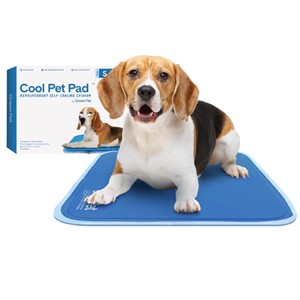
The Green Pet Shop Cooling Mat
Price At Time of Publish $40.00

MH MYLUNE HOME Self Cooling Mat
Price At Time of Publish $40.00
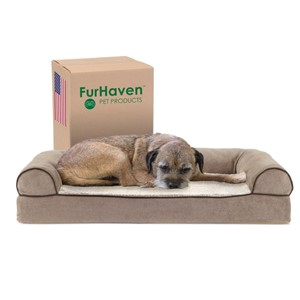
Furhaven Pet Products Cooling Gel Bolsters Small Bed
Price At Time of Publish $45.00

Furhaven Cooling Gel Medium Bed
Price At Time of Publish $42.00

ARF Pets Cooling Gel Pad
Price At Time of Publish $35.00
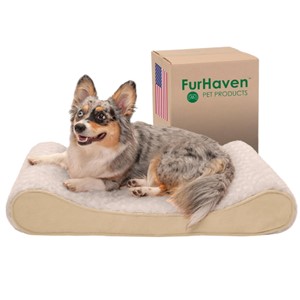
Furhaven Cooling Gel Small Bed
Price At Time of Publish $50.00
Price At Time of Publish $50.00
Orthopedic Dog Beds

PetFusion Orthopedic Dod Bed
Price At Time of Publish $80.00
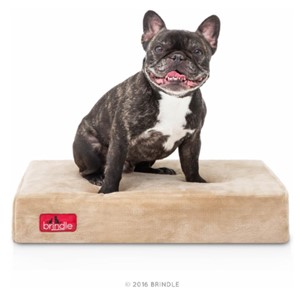
Brindle Orthopedic Bed Khaki
Price At Time of Publish $30.00
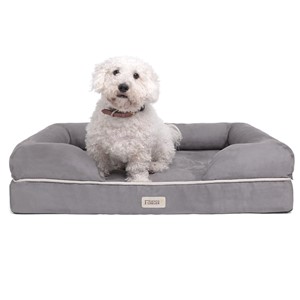
Friends Forever Orthopedic Bolster Bed
Price At Time of Publish $53.00

K9 Ballistics Tough Orthopedic Small Crate Bed
Price At Time of Publish $89.00

MidWest Homes Small Bolster Dog Bed
Price At Time of Publish $10.00
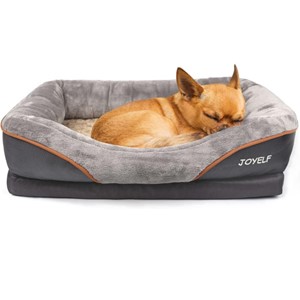
JOYELF Orthopedic Small Sofa Bed
Price At Time of Publish $40.00
Bolster Dog Beds

Furhaven Small-Medium Bolster Dog Bed
Price At Time of Publish $57.00
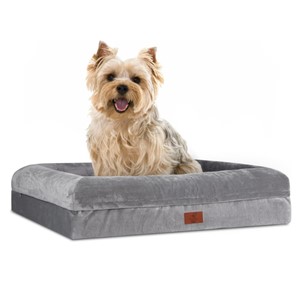
Yiruka Small Bolster Sofa Dog Bed
Price At Time of Publish $40.00

K&H Pet Products Bolster Crate Pad
Price At Time of Publish $22.00
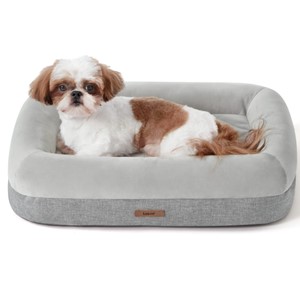
Leasure Small Bolster Dog Bed
Price At Time of Publish $40.00
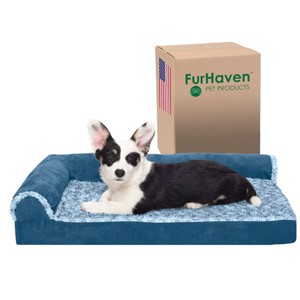
Furhaven Small-Medium L-Shaped Bed
Price At Time of Publish $39.00

Long Rich Bolster Small Bed
Price At Time of Publish $27.00
Elevated Dog Beds
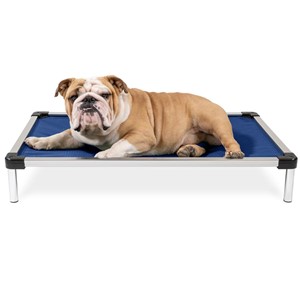
K9 Ballistics Chew Proof Elevated Small Bed
Price At Time of Publish $129.00
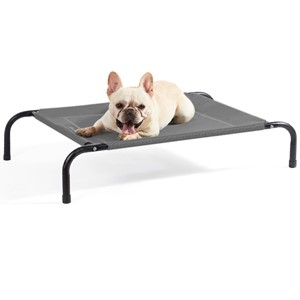
Bedsure Medium Elevated Dog Bed
Price At Time of Publish $33.00
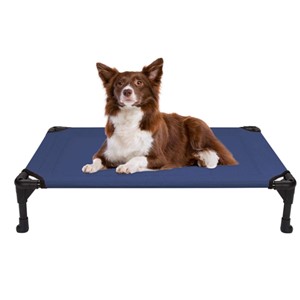
Veehoo Medium Elevated Dog Bed
Price At Time of Publish $45.00
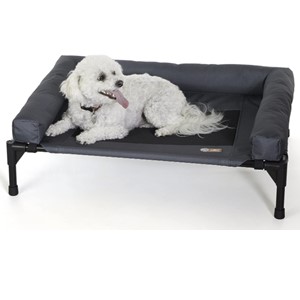
K&H Pet Products Elevated Bolster Dog Bed
Price At Time of Publish $57.00

Kuranda Elevated Chew Proof Small Dog Bed
Price At Time of Publish $134.00
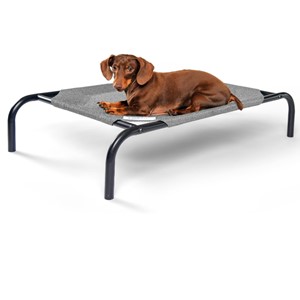
Coolaroo Small Elevated Dog Bed
Price At Time of Publish $21.00
Shop Cave/Donut Dog Beds

Snoozer Cozy Cave Bed
Price At Time of Publish $87.00
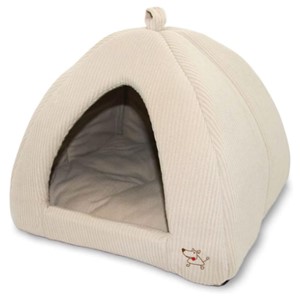
Best Pet Supplies Tent Bed
Price At Time of Publish $23.00
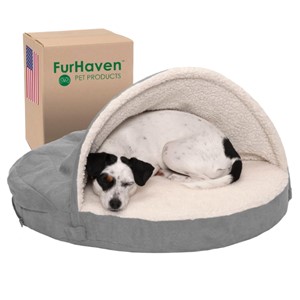
Furhaven Round Orthopedic Cave Bed
Price At Time of Publish $30.00

Best Friends by Sheri Original Calming Donut Bed
Price At Time of Publish $25.00
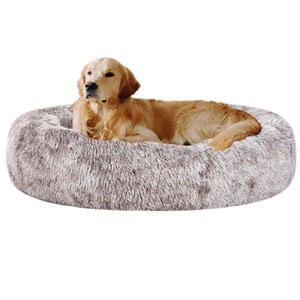
Coohom Oval Calming Donut Cuddler Bed
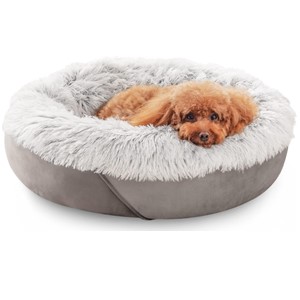
JOEJOY Calming Donut Small Dog Bed
Price At Time of Publish $33.00
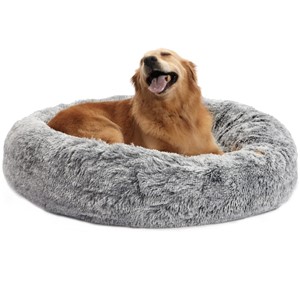
Bedfolks Calming Donut Dog Bed
Price At Time of Publish $66.00

Bedsure Medium Donut Dog Bed
Price At Time of Publish $36.00

Bedsure Medium Donut Dog Bed
Price At Time of Publish $40.00
Related Articles
Below are some other articles that might be of interest to you. Just select the one that you want to learn more about.
- Are Crates Bad for Dogs
- Best Healthy Dog Food Brands
- Christmas Presents for My Dog
- Dog Parasite Symptoms
- How To Clean Dog Beds
- Ingredients To Avoid In Dog Treats
- Puppy Proofing Your House
- Signs Your Dog Is Ill
- Using Alexa for Dog Behaviors
- When Should A Dog Bed Be Replaced
Go back to the Dog Luxury Beds home page.

